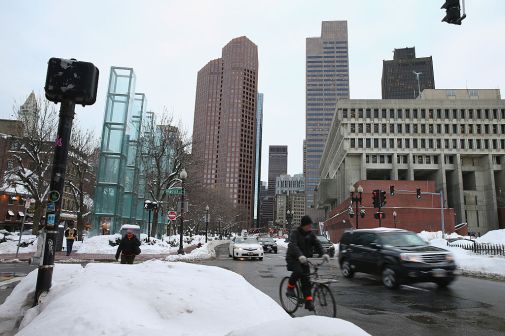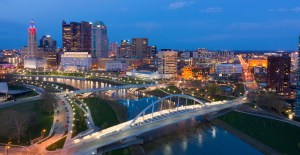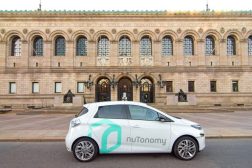Tech, transit are married in 58 projects under Go Boston 2030

Boston published a massive plan this week revealing how the city will transform its transportation in the coming years through the development of technologies like self-driving vehicles, connected infrastructure and big data.
Two years in the making, Go Boston 2030 was created through collaboration with the community in what the city called its “question campaign.” More than 4,000 people contributed thousands of ideas on the street, at roundtable sessions and online that ultimately formed the 224-page document. It now outlines the 58 projects constituting a vision of the city’s transportation future. Key goals include:
- Making every home in Boston within a 10 minute walk of a rail station or key bus route.
- Eliminating traffic fatalities and severe injuries within the city.
- Decreasing the average commute time to work by 10 percent.
Achieving these goals — while also elevating global priorities around the environment, a growing economy and societal equity — would require dramatic changes in how people navigate the city today. Boston plans to create a system where people who drive to work alone are more likely to use public transit, bike, or walk. Today, about 39 percent of Bostonians drive alone to get to work.
In 1631, the city launched one of its first transportation projects in the form of oxcarts that moved freight across town. Today, the city is looking to cars that drive themselves, bikeshare networks, adaptive lighting and smarter internal use of city data.
Though Boston does not aspire to meet these goals until 2030, Boston Transportation Department Commissioner Gina Fiandaca told StateScoop that many of the technologies involved in these efforts are already present.
A pilot project with self-driving car company nuTonomy is making progress, she reported. The city created a regulatory framework and test vehicles operating in the city’s Seaport area are completing milestones, including 100 hours of operation in “optimal” conditions, which means during the day and not raining, and are now nearing completion of 100 hours during suboptimal conditions, which include darkness and precipitation. Soon, she said, the city will look to expand the pilot to other neighborhoods in the city.
The Go Boston 2030 document states that today the focus is on establishing best practices, which include self-driving vehicles that are shared, electric and “can improve mobility options for all residents.”
“There’s an awful lot in this plan around what we call transformative technology,” Fiandaca said. “Mobile and digital technology is really blurring the boundaries of where we live and work in the city and changing how people need to move around.”
Increased broadband connectivity, use of bike share networks, and new thinking around how the city is allocating its infrastructure contribute to a new kind of urban transportation system, Fiandaca said. Pilots around smart traffic signals and adaptive lighting are also underway, she said. The Go Boston 2030 document explains these efforts as creating an automated system that adjusts signals throughout the city to function as a single network.
Technology is foundational to transportation systems’ future, said Jascha Franklin-Hodge, the city’s chief information officer.
“They’re in many ways inextricable, whether you’re looking at the role of smartphone driven services like Lyft and Uber, even bike-sharing is incredibly dependent on technology, ” Franklin-Hodge said. “And there’s all these new sources of data that help us understand the transportation system to better plan and understand what happens when we make changes.”
One project his office is particularly excited about, he said, is a multimodal payment tool called Key to the City, which would allow people to use a single form of payment across a wide array of transportation options.
“To do it right, it’s going to require a lot of technology, but more importantly, it’s going to require a lot of business models around this to be sorted out,” Franklin-Hodge said.
Government has a lot of regulatory work to do, he said, but society itself has a lot of things to figure out before these technologies become reality, too.
“There’s this huge unknown we’re facing down and technology is far ahead in terms of policy and even the social interaction dynamic in public space,” Franklin-Hodge said. “If I as a pedestrian know a self-driving car will not hit me, why would I not just cross where and when I want to cross, rather than wait at a light?”






